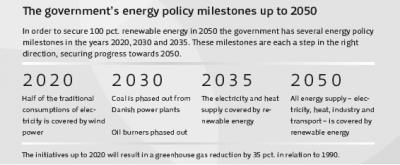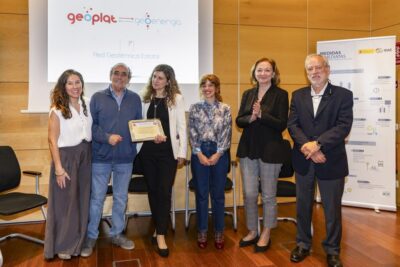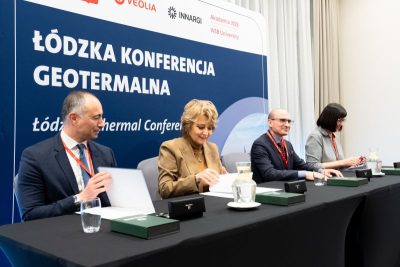Denmark, all the heat supply covered by renewable energy
In order to secure the 100 % of renewable energy in 2050 the Danish goverment has several energy policy milestones in the years 2020, 2030 and 2035.
Denmark is well known for its wind sector but there are a number of factors that explain how a government could announce that in 2035 all the heat supply will be covered by renewable energy. The respect for the environment, use of existing resources, common sense, long-term vision and political support, result in a productive economy model based in a sustainable growth.
Before to define the importance of the geothermal energy we would like to introduce the Danish district heating history marked by two factors, wastes and the lack of fuel highlighting this extract from the Danish Board of District Heating.
“During the Second World War the lack of diesel oil made it difficult to maintain the heat supply from the combined heat and power plants, and some plant owners were therefore forced to establish back-up heating, using solid fuel heat-only boilers. After the normalization of the oil deliverances, these plants represented excess capacity and therefore created a basis for expanding the heating supply networks”
This videos shows a closer look about the Danish District Heating history
Chapter 2: Fuel flexibility
Chapter 3: Danish Experience
To understand the government’s announcement we have to know the key success factors based in 5 pillars;
1. – Copenhagen lead the way
In Denmark the 60% of the households are heated with district heat from district-heating plants and co-generation plants but if we focus in Copenhagen, more than 98% of the heat demand is covered by district heating with 1.500 Km of double-piped net and more than 50 peak load boiler plants. In 2009 the composition of fuels in the Denmark district heating (including domestic water) production was;
- Biomass: 38.7%
- Other renewables 1.4%
- Natural gas: 29.6%
- Coal: 18.9%
- Oil: 4.5%
- Wastes, non-renewable: 6.8%
In this link appear all the district heating installations.
2. – Regulatory framework
With more than 400 members the Danish District Heating Association facilitate the cooperation between companies and lobby for their interests helping to contribute into the correct development of the district heating framework. In the 80´ties a heat planning was launched in Denmark with the obligation to connect all the buildings to the network.
3. – Financial incentives
The maxim is, if you want to produce heat based on fossil fuels you’ll be taxed. By contrast, there are incentives if the heat is produced from renewable sources
4. – Energy saving policies
The buildings represent between the 30 and 40 % of the total Danish energy consumption so in order to achieve those objectives this kind of policies are crucial. Initiatives like “Voluntary agreements on energy efficiency”, “Energy labelling for large and small buildings” and “Reduction of standby consumption” are promoted by the Danish Energy Agency.
5. – Symbiosis between Public and Private
The political class has seen the importance to promote the investigation and innovation. The symbiosis between the private sector and the promotion of policies from the public sector to increase the energy efficiency has made from Denmark an exporter of solutions. Logstor, Danfoss, Grundfos or Cowi are examples of leading companies worldwide
What about geothermal energy?
An investigation carried out by the Metropolitan Geothermal Alliance has shown that there is enough geothermal energy (in the licence area) to satisfy the district heating need of 30-50 % of dwellings in Copenhagen for several thousand years.
According to the Danish Energy Agency, for every 1.000 m of depth the temperature increases between 25 and 30°C (geothermal gradient) and “ Throughout much of Denmark, there are porous and permeable sandstone layers from which geothermal heat can be produced for district heating purposes. However, the sandstone layers become less porous and permeable with depth, so although the layers, and therefore the water contained in the layers, become hotter with depth, there is a maximum depth at which it ceases to be cost-effective to extract geothermal heat. In Denmark, experience has shown that this limit is normally around a depth of 2.500 m”
Currently, two geothermal plants are in service (Thisted and Amager) and a third plant is planned to be taken into operation in Sonderborg.
Other project is underway but the geothermal production only represents the 1% of the district heating needs so if the Danish Government wants to cover the 100% through renewable energy by 2035, geothermal energy should play a bigger role.
Sources
Danish Board of District Heating
Danish District Heating Association
Written by A.Ormad



















